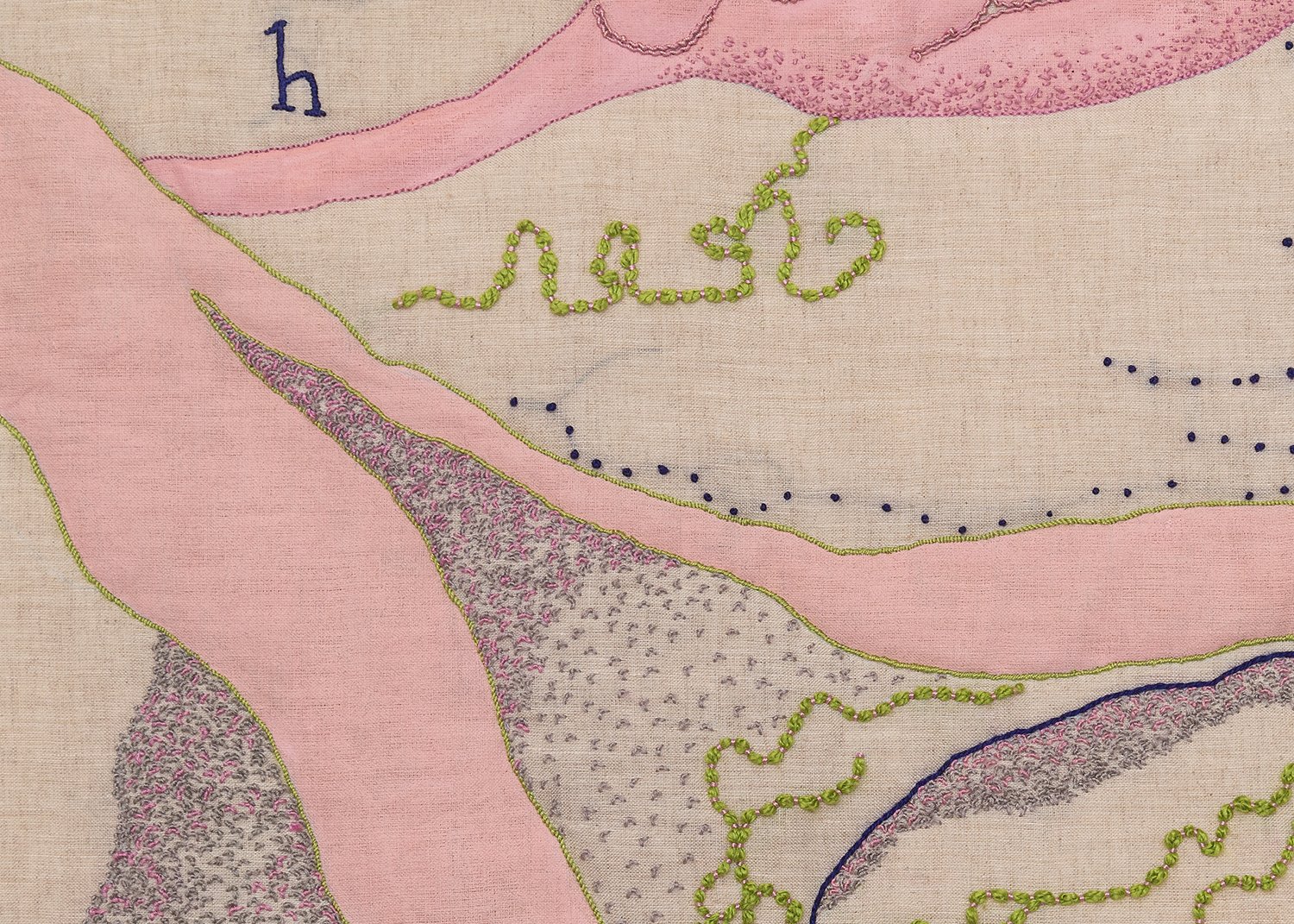
Megan Canning is a mixed media textile artist who uses embroidery, soft sculpture, appliqué, quilting, and silk painting to create soft and sensuous pieces that reveal the hidden landscapes of the human body and natural world. In challenging the boundaries between painting and traditional textiles, she is constantly finding new ways to make a line. On Saturday, September 21st, Megan will be joining us at TATTER for an in-person creative embroidery workshop: Embroidery as Painting. In advance of her class, we spoke with Megan about her practice, inspirations, and how she began painting with thread.
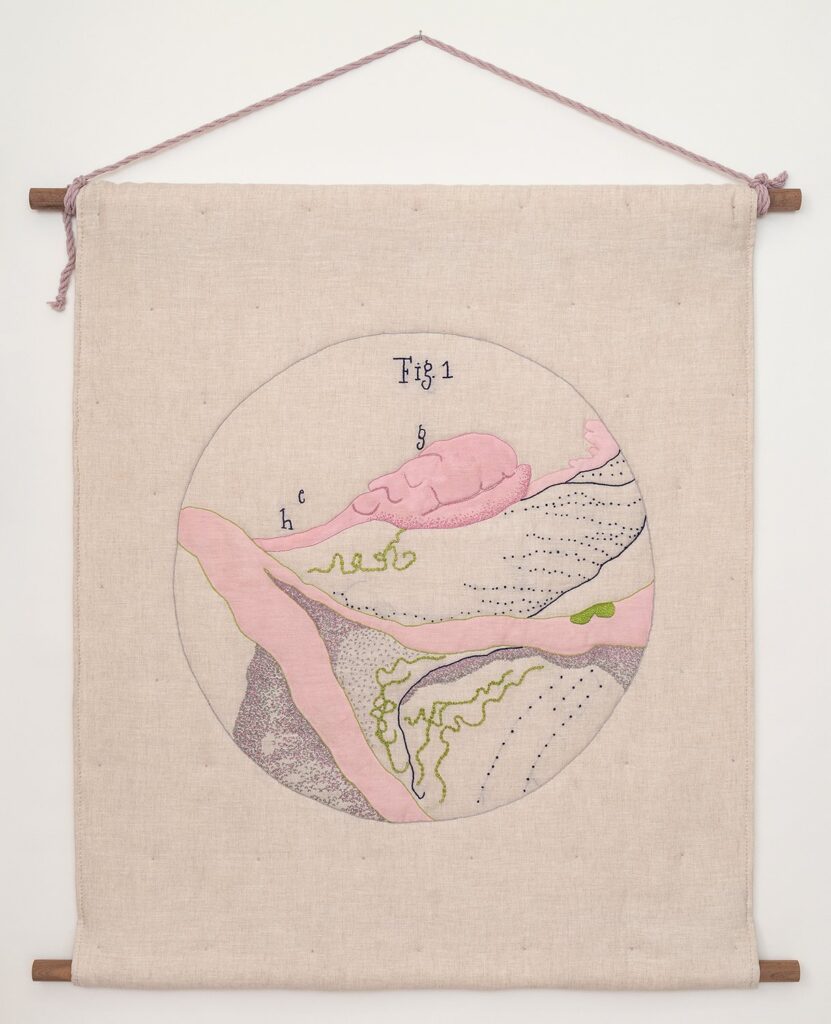
Tell how you came to be an artist.
MC: Well, I’ve loved making things ever since I was little. I was very lucky to have parents who were encouraging of the arts. They enrolled me in after school classes and weekend ceramics classes and then in high school I started to feel like “Okay, this is who I am and this is what I want to do.” In my freshman art class in high school we started to do contour line drawing and blind contour. Even though I wasn’t an illustrator on the spot, I was lucky enough to have a teacher who really paid attention and recognized the quality of my lines and my attention to detail and all of that. And those weren’t things that I thought of at that point. I was never the kind of artist where someone could ask me to draw a rabbit and I could just do it and do it perfectly and so I had felt that if I couldn’t create something photorealistic I didn’t really have talent. Without those two high school art teachers, and without that kind of program, I don’t know if I would have continued with art. I ended up doing my undergrad in Art Education with an emphasis on painting and then went to Hunter College for the MFA program in painting.
At the time I went to Hunter, I was primarily making non-representational, abstract paintings. My first year of grad school, I became really interested in the body and the skin and how we collect sensory memories. I was interested in the idea of what’s beneath the surface of the skin. I was doing research at the New York Public Library and stumbled across these gorgeous books of microscopic photographs of skin and blood cells and things like that. That kind of started me on this path of exploring the human body.
I started to make paintings inspired by these micro photographs, just totally drawn in by how beautiful and complex the insides of our bodies are. I was starting to make work about the skin and about this boundary between our interior and exterior world. That’s when I started to embroider into my paintings. There were two reasons for it, one was that I loved the idea of the surface of the painting being kind of neat and orderly in the front but with a mess of stitching in the back mimicking the mess inside the body. And I was also looking for a new way to make a line. I had no background in any form of textiles, no one in my family does anything with fibers, so to me it was totally new.
When I made my first painting inspired by these micro photographs of blood cells, I stitched some text into it. The professor of that seminar referred to the stitching as something “a deranged person would do.” Which was not encouraging. At that time, the professors at Hunter were these hardcore formalist color field painters so this was not their cup of tea . But I kept with it because there was something there, both conceptually but also physically, about the act of stitching that called to me. It felt like I was putting my body into the work. Rather than just applying paint to the surface, there’s something about piercing the surface, piercing the skin, of the canvas, of the paper. And so over the years, my interest and commitment to textiles has really come to the fore, and the painting has kind of receded a bit more into the background.
How does the medium of embroidery inform your process?
I’m a bit of a perfectionist, I pay attention to detail, I’m a very organized person. So in a lot of ways, my attraction to embroidery makes sense. But I also didn’t go to the Royal School of Needlework, or take any formal classes for that matter, so my stitches aren’t all perfect. I embrace that, the messiness of the back and experimenting with stitches that aren’t necessarily the proper technique. I’m very inspired by the Sheila Hicks approach to weaving, pushing and challenging the medium, finding out how my practice can expand people’s perceptions both of what textiles and embroidery in particular can do. And at the same time I also want to expand people’s awareness of all of the wondrous things that happen both inside of our bodies and inside the biology of plants. There are all these hidden landscapes in the natural world around us that we don’t see but that are so present in our lives.
What do you hope that people will bring with them when they approach your art?
I think it’s a big ask, but I would ask for openness. I think that it’s very hard to come to a work of art with curiosity, but my hope is that people see my work inspired by parts of the body and think “ I didn’t know there were these worlds inside of me.” I want people to be open to being delighted and surprised. One of my biggest goals is to instill a sense of wonder or awe of the hidden beauty that is around us and inside of usI want someone to look at my art and go, “Oh, I hadn’t thought about it that way” or “This speaks to something inside of me that I didn’t have words for.”
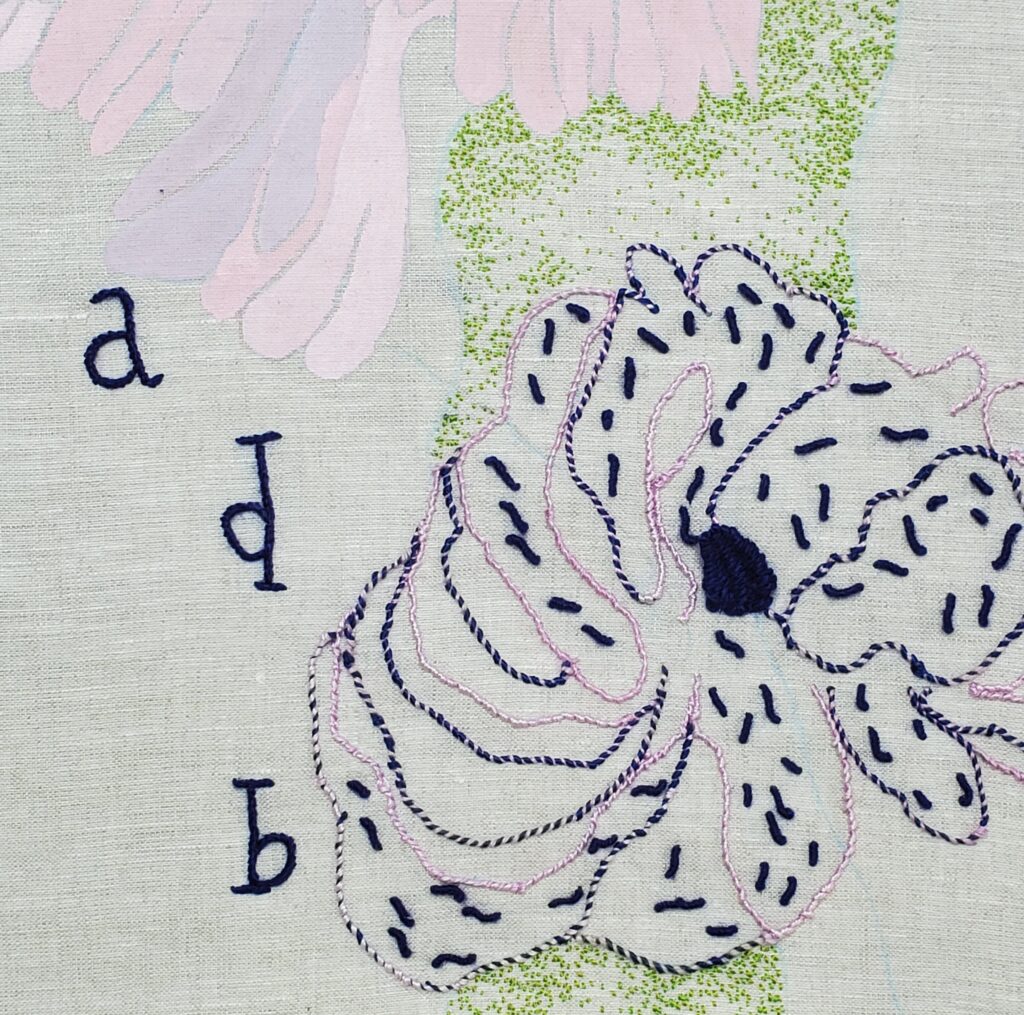
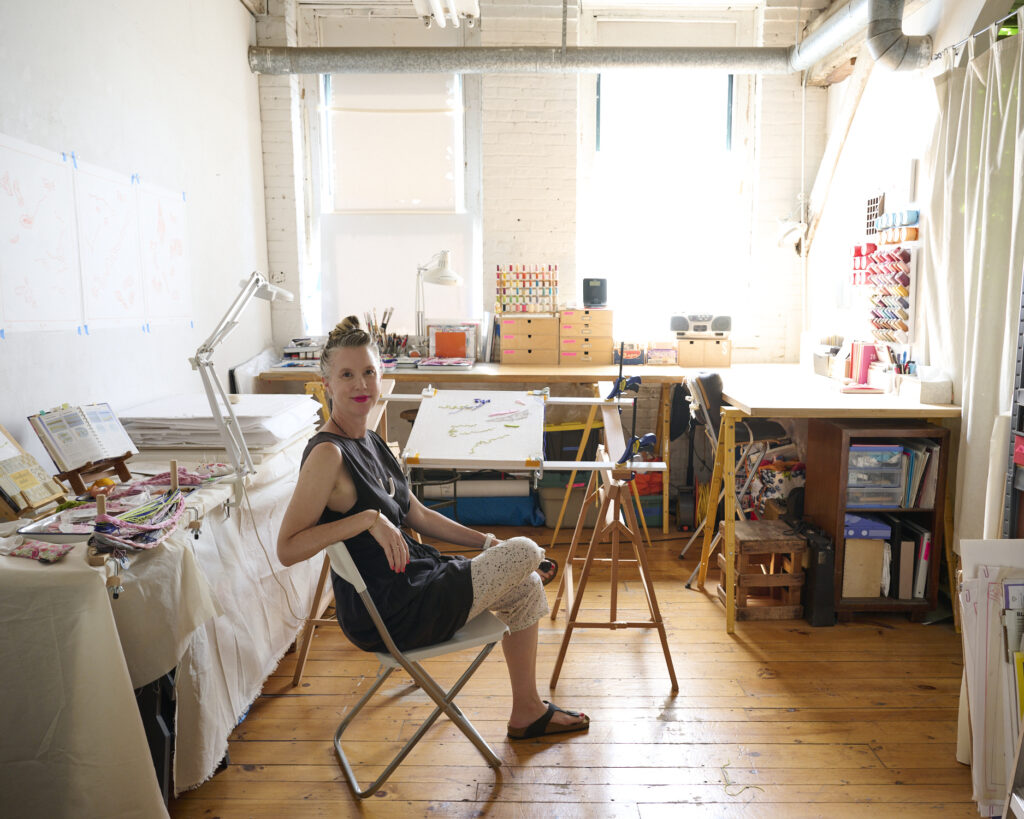
I was just having this conversation last week about the state of art education today. There’s this pervading sense that if you don’t have any art history knowledge or training or if you didn’t have art classes growing up and weren’t able or encouraged to develop an appreciation for art, you aren’t able to understand or access contemporary art In my experience, there is a tendency for people to shut themselves down, saying “I don’t know anything about contemporary art” or “I don’t know anything about embroidery, so I can’t access this.” I totally disagree. Anyone can have that visual or sensory experience, really. I want people to be able to have that right with visual art, to feel like they can just enjoy what they’re looking at without knowing theory, history, materials or techniques. You just need to be open.
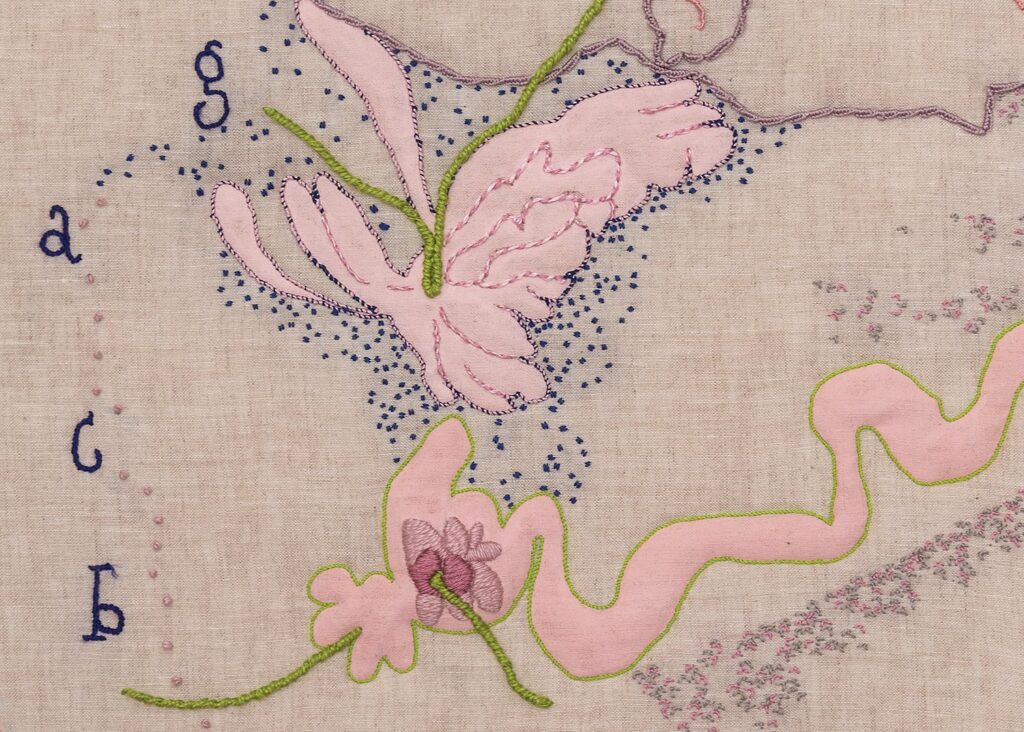
I do love when people ask me what they’re looking at or offer their own interpretation. I love when people are willing to say that a piece makes them think of undersea creatures, coral, the brain, or whatever. Sometimes it’s something you never considered that they would see there. If they really do want to know where the images are derived from, I will tell them. Their interest and openness and curiosity is very much where I started, and I think it’s how most people who are mixed media artists or textile artists start creating. Hopefully that’s something that’s going to be really exciting for the students in the creative embroidery series, to approach embroidery from a place of no expectations, just interest and curiosity
Is there anything you would like for your students to know before they take your class?
I have taken other workshops so I know that there is definitely a tendency for folks to expect something to be perfect right away, or expect what they’re doing to look exactly like the example. I do think that this is partially just because I started out as an art teacher, but I’m interested in getting people out of the mindset where they’re trying to draw the rabbit perfectly instead of their interpretation of a rabbit. I want them to walk away with the skills that they need to continue experimenting and pushing their own practice.
